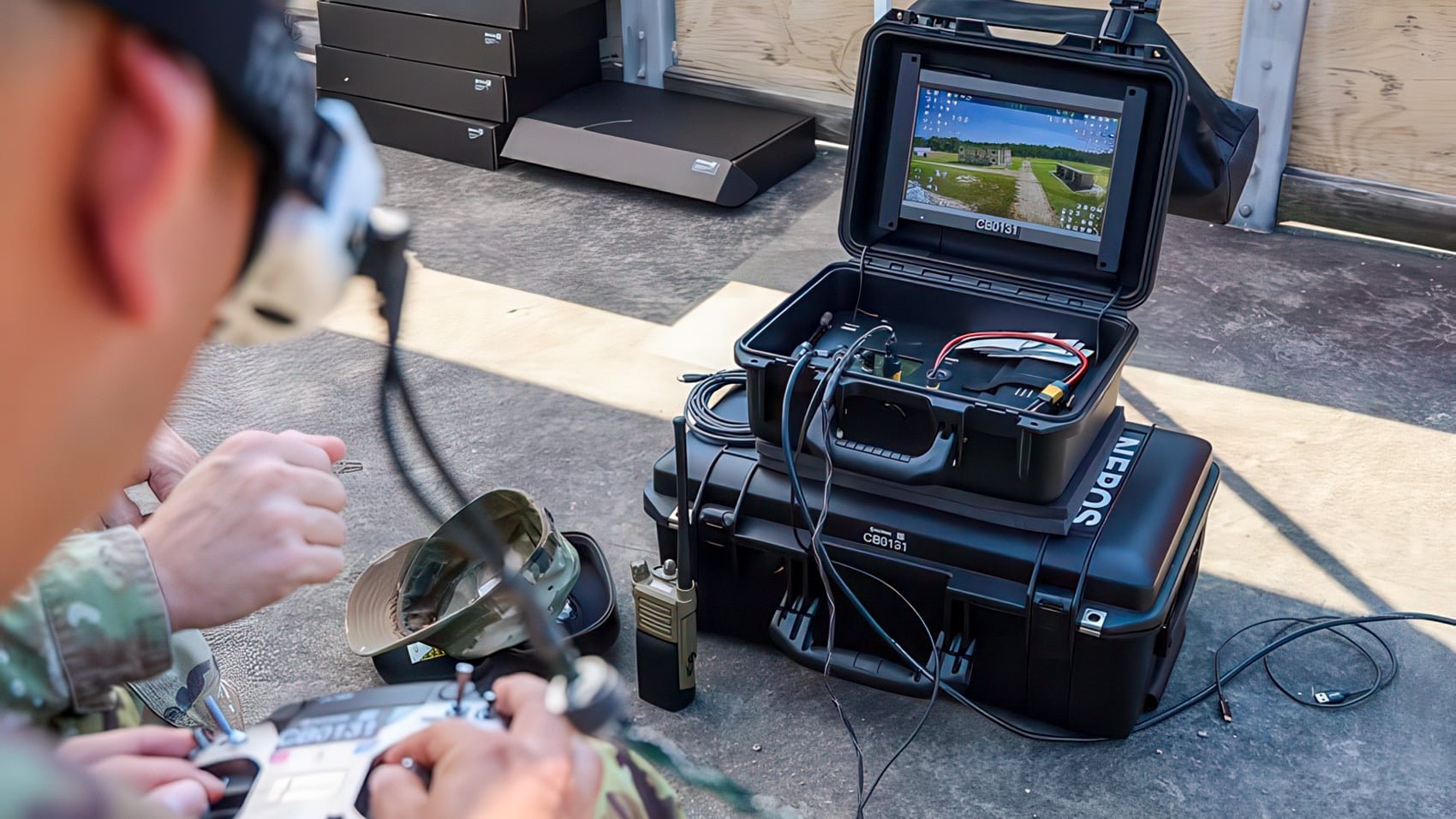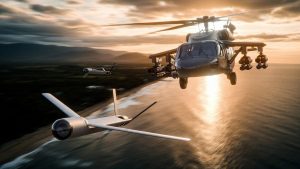The U.S. Army’s Unmanned Advanced Lethality Course (UALC) is transforming battlefield training by turning ordinary soldiers into proficient “sky ninjas” capable of utilizing FPV (first-person view) drones in combat. This groundbreaking three-week initiative, launched at Fort Rucker, Alabama, in August 2025, signifies a major shift in military culture and technology, drawing inspiration from drone racers, gamers, and frontline innovators.
What Is the Army’s Lethal FPV Drone Course?
The UALC is the Army’s premier program designed to efficiently train soldiers to use nimble FPV drones for lethal missions. Soldiers master controlling drones with an immersive pilot view, simulating a video game experience with real-world consequences.
- Course duration: 3 weeks, integrating classroom theory, advanced simulation, and live fire drills.
- Participants: A diverse mix of infantry, cavalry scouts, UAS operators, and Army aviation staff, with 28 soldiers in the inaugural class.
- Goal: To achieve global parity in tactical innovation, empowering soldiers to become adept drone operators using commercial and custom platforms.
Why FPV Drones—and Why Now?
FPV drones are revolutionizing modern military strategies:
- They provide unparalleled speed, agility, and real-time precision.
- Soldiers view from the drone’s perspective, navigating obstacles, deploying payloads, and intercepting enemy drones mid-flight.
- Inspired by civilian racing and Ukrainian battlefield techniques, the U.S. military aims to bridge the innovation gap, acknowledging the extraordinary impact and soldier survivability offered by unmanned systems.
Inside the Training: Turning Recruits Into “Sky Ninjas”
The training combines the excitement of gaming with real-world engineering, blending adrenaline, scientific principles, and a hands-on spirit:
- Classroom & Simulation: Students practice on flight simulators, accumulating 20–25 hours of experience before live flight.
- Real-World Flying: Strategic missions are performed on urban military sites, with students managing drones through “enemy” environments under combat-like stress.
- Technical Wizardry: Building and repairing drones is central to the course. Using 3D-printing, students create, adapt, and mend drones, embodying the battlefield adage: adapt, improvise, overcome.
- Integration With Battlefield Operations: “Sky ninjas” learn to direct artillery or airstrikes through drone feeds—skills once exclusive to elite controllers, now shared with general units.
- Lethal Applications: Soldiers engage with simulated and live payloads, executing scenarios like targeted strikes and drone-on-drone combat. Notably, an Army FPV drone achieved a simulated air-to-air kill at Fort Rucker in 2025, proving science fiction as military doctrine.
Who Is Behind the Course?
Influential in its creation, Captain Rachel Martin developed and delivered the UALC within merely 90 days, reflecting the Army’s newfound agility. The curriculum, crafted with Army Centers of Excellence’s collaboration, merges current combat needs with rapid innovation. Faculty members include experienced UAS operators, technical enthusiasts, and forward-thinking tacticians.
A Culture Shift—From Tank Crews to Joystick Mavericks
- The Army welcomes a new warrior generation: Conventional soldiers and technology enthusiasts learn together.
- Learning by Doing, Sharing to Win: Participants document experiences, share insights throughout the force, and source drones and spare parts via a secure “online storefront,” encouraging field innovation.
Classroom “Easter Eggs”—Real Stories, Gamer Spirit
- Gamer Roots: Many participants have roots in FPV racing games and meme culture, and the Army builds on this energy by linking it to disciplined combat outcomes.
- Adapt or Lose: Adapting involves a steep learning curve, but collaboration and innovation, often fueled by humor, lead to rapid proficiency.
Practical Impact on the Battlefield
FPV drones are altering combat strategies:
- Reconnaissance: Commanders receive live-stream street-level intelligence without risking soldiers, akin to a real-time “Google Street View” in hostile zones.
- Precision Strikes: Drones deliver ordinance accurately, often utilizing commercial components for military objectives.
- Drone Dogfights: Affordable quadcopters equipped to intercept hostile drones reset cost-benefit calculations.
- Rapid Innovation: Field teams share printable parts, tactics, and strategies with the UALC, fostering a cycle of innovation and development.
The Human Side: Teamwork, Trust, and the Will to Learn
The UALC emphasizes technology and personal growth:
- Learning From Each Other: Various roles, from infantry to tech experts, collaborate, weaving stories and fostering trust.
- Supportive Instructors: The hands-on program encourages peer teaching and problem-solving.
- A Sense of Mission: Students are inspired to bring newfound expertise back to their units, enhancing overall Army competence.
What’s Next? The Future of Army Drone Operations
- Iterative Improvement: Future courses will introduce more advanced tactics, including multi-drone coordination and AI-assisted targeting.
- Expanding Access: The UALC will facilitate similar programs for other units and branches.
- Wider Mission Scope: FPV drones will be integral to various operations, including search and rescue, urban combat, and logistics.
Facts, Figures, and Forward-Looking Statements
- Course launched: August 18, 2025.
- Length: 3 weeks, with plans for further development.
- Participants: 28 in the initial batch; the Army aims for widespread “sky ninja” training.
- Focus: From drone piloting to real-world mission execution and innovation.
Summary Table: What Makes the Lethal FPV Drone Course Unique?
| Feature | Details |
|---|---|
| Training Style | Blends classroom, simulation, and live-fire “gamified” drone ops |
| Technical Skills Taught | Piloting, maintenance, 3D printing, custom payload design, troubleshooting |
| Tactical Skills Taught | Reconnaissance, fire support integration, lethal use, counter-drone combat |
| Team Culture | Merges “maker” ethos, collaborative problem-solving, peer teaching |
| Operational Impact | Quickly deployable expertise, tactical flexibility, enhanced squad and platoon capability |
| Future Expansion | AI integration, multi-drone coordination, swarms, universal qualifications |
Expert Tips and Takeaways
- For soldiers: Embrace your gamer instinct but prepare for serious stakes. Innovation and creativity are crucial.
- For commanders: Foster innovation from the ground up—sometimes the most tech-savvy soldier has the best tactic.
- For drone enthusiasts considering military service: Your FPV skills are in demand—the Army seeks “sky ninjas,” not just traditional pilots.
By blending competitive drone sport, combat, and engineering, the Army’s FPV drone course isn’t merely catching up—it’s pioneering the future of aerial supremacy, one “sky ninja” at a time.













